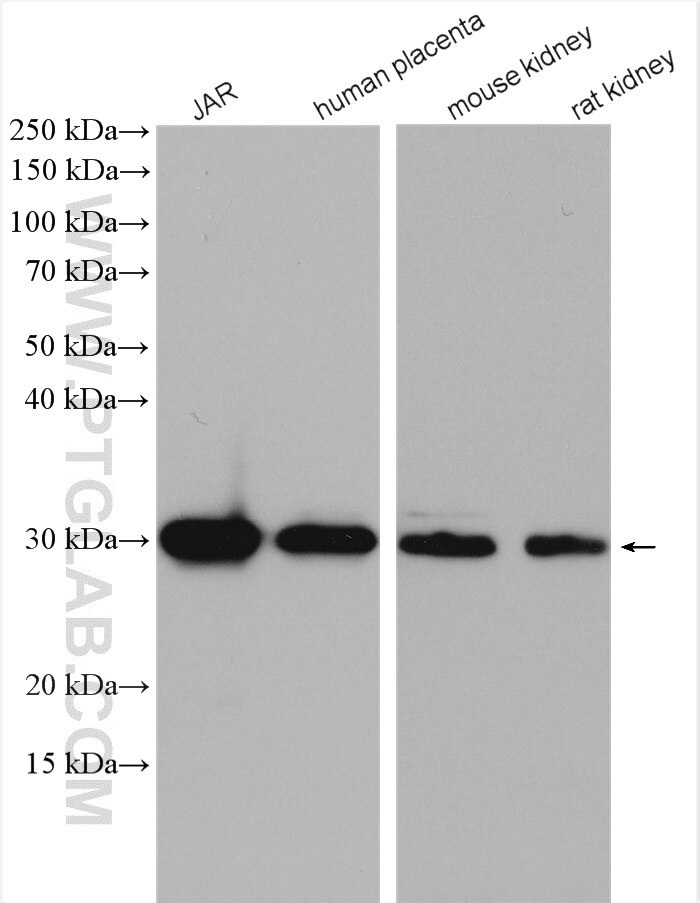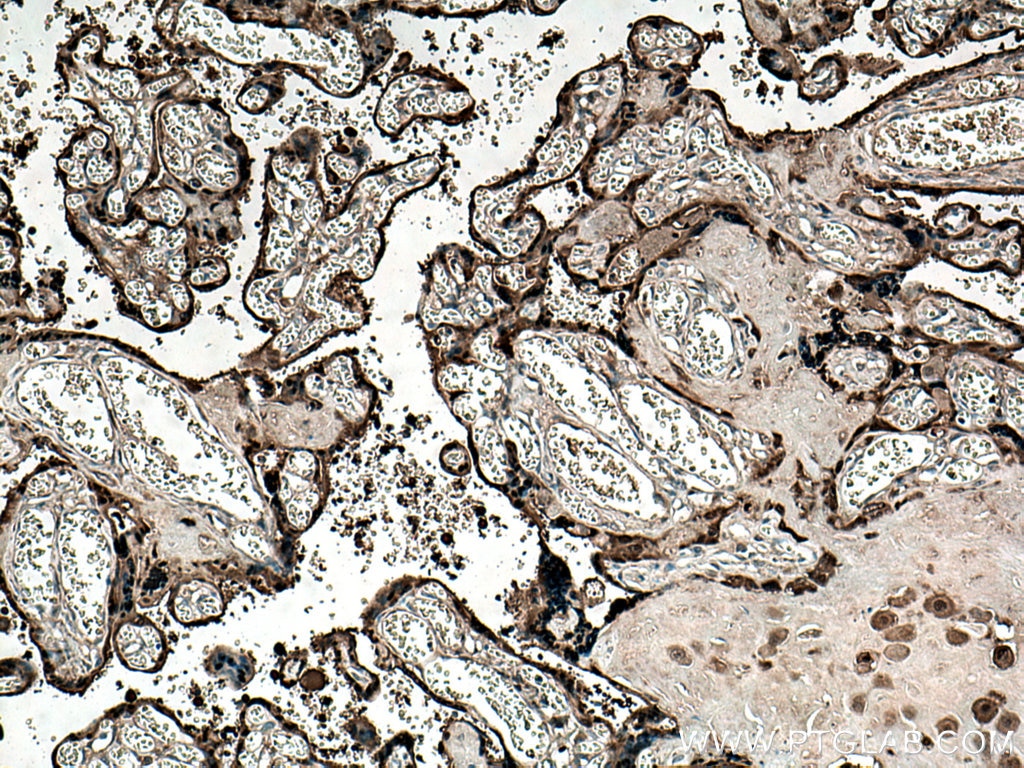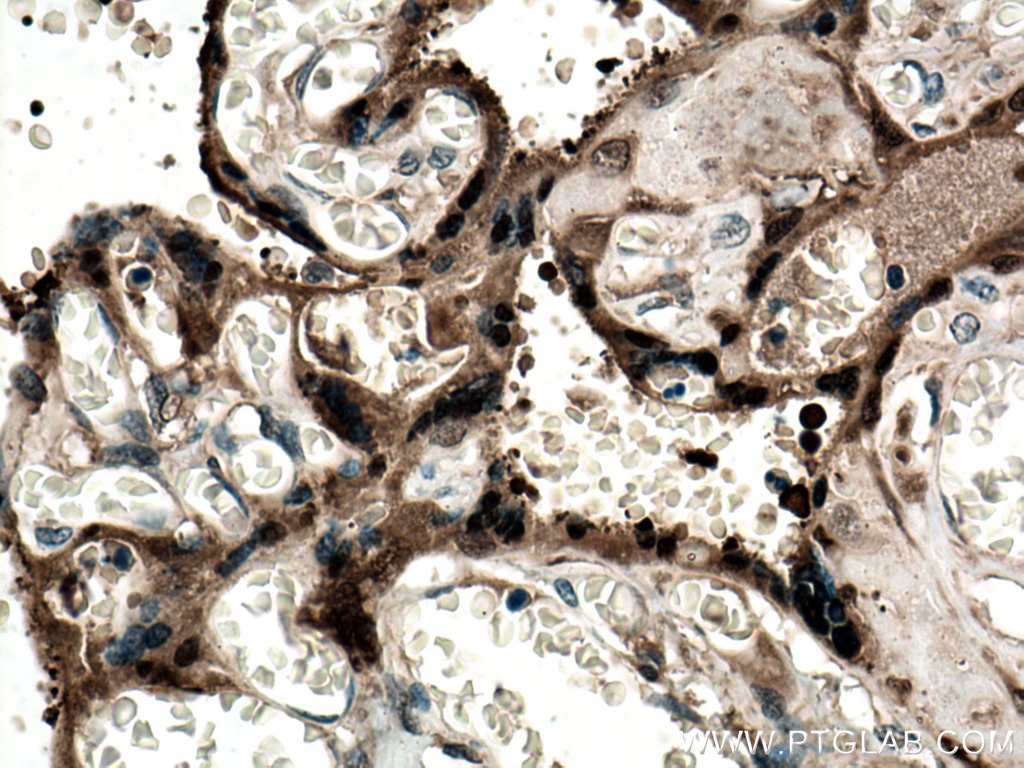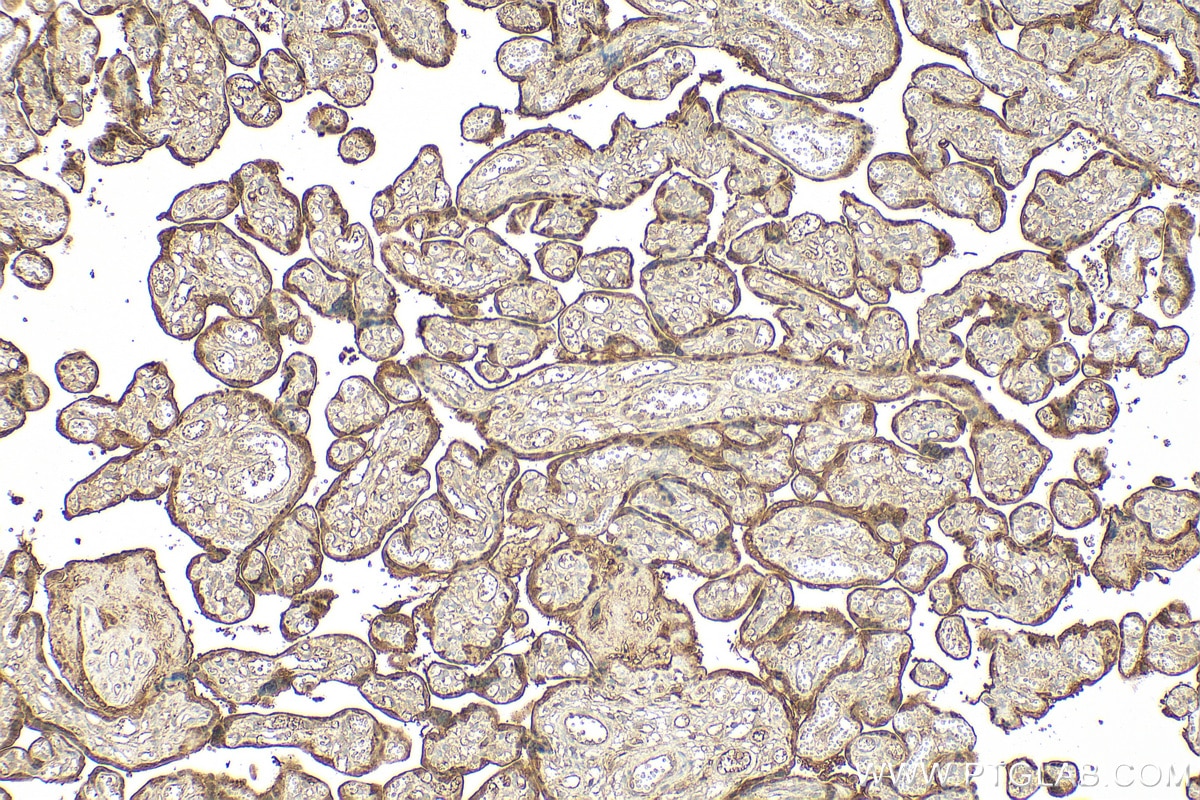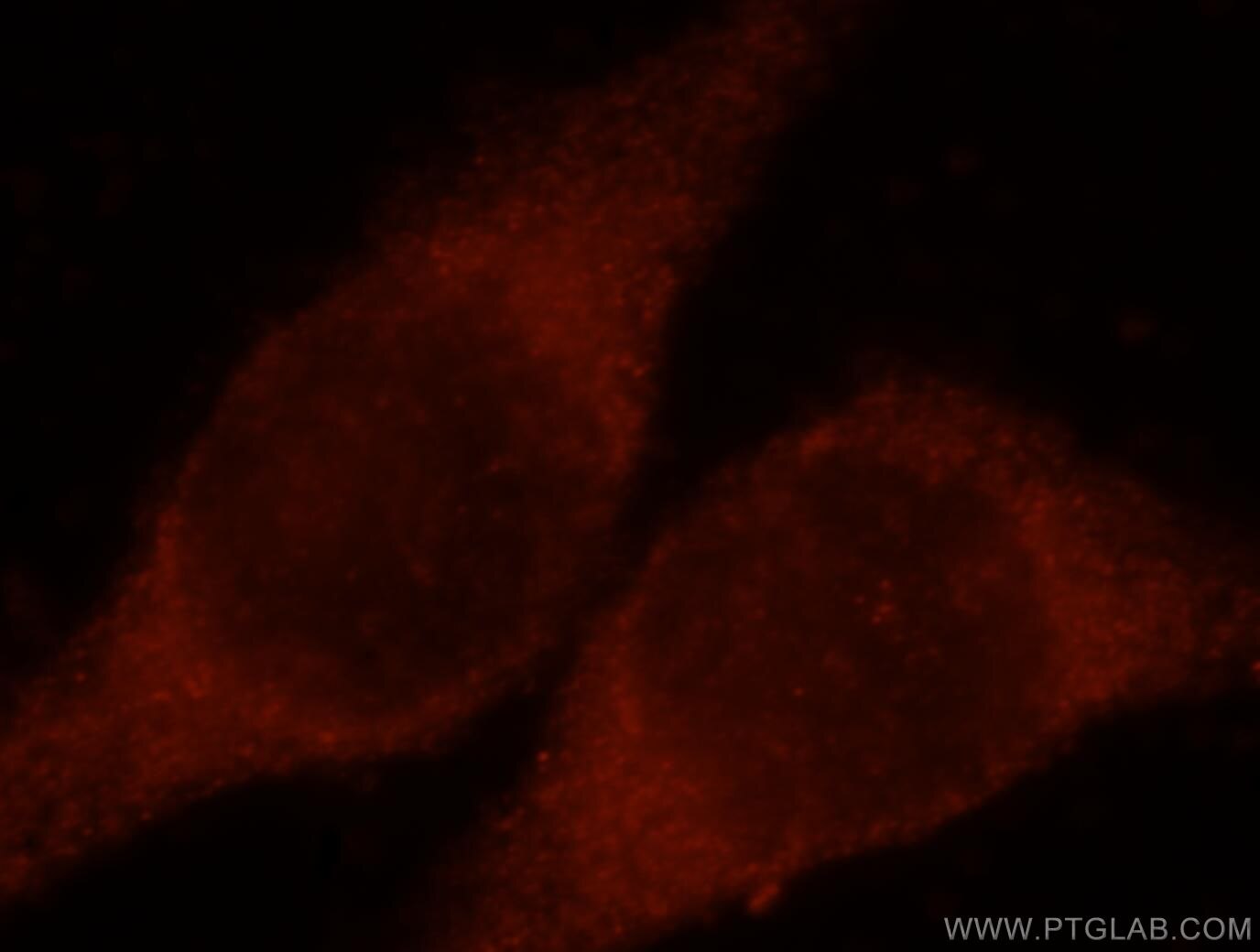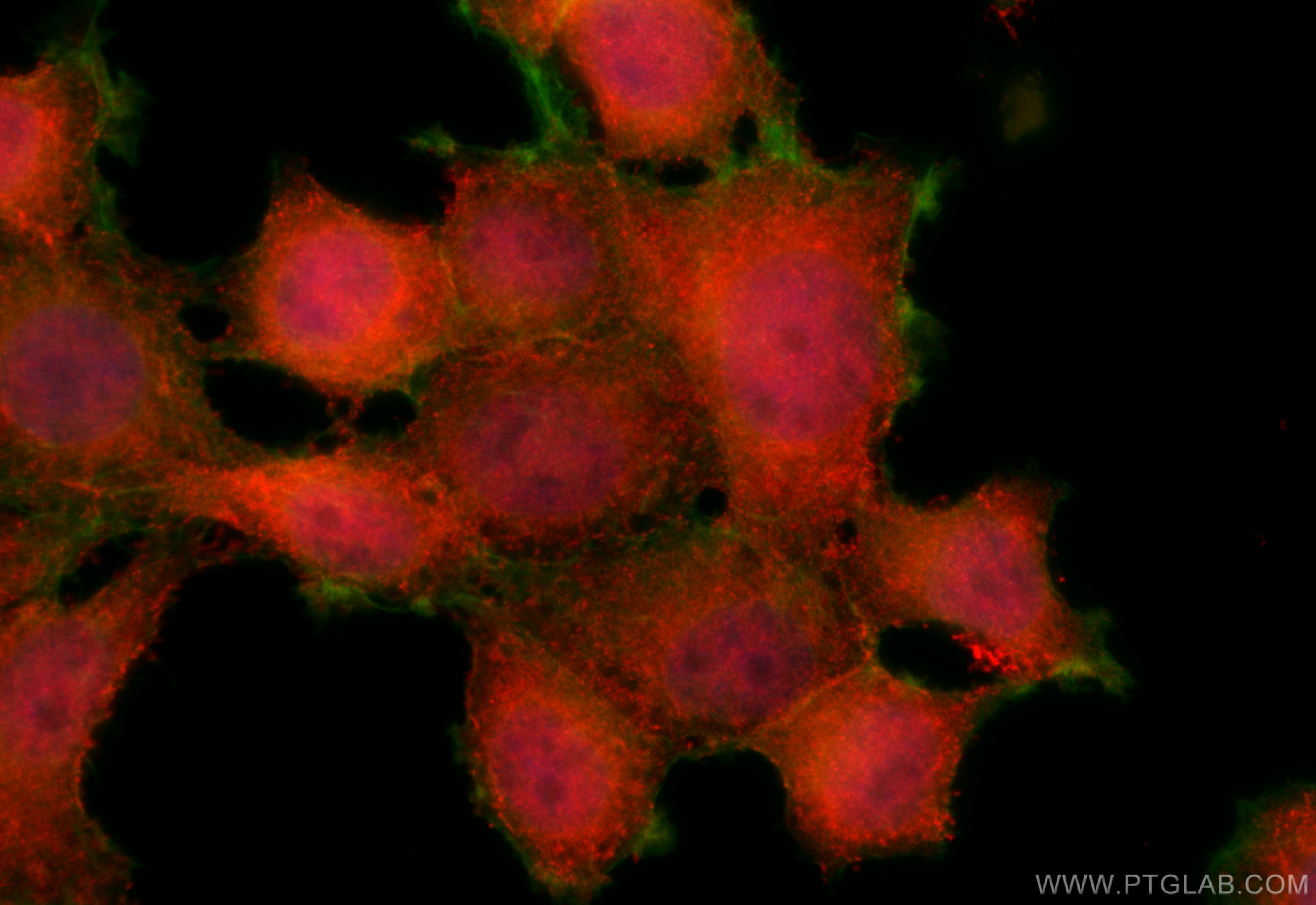CLIC3 Polyklonaler Antikörper
CLIC3 Polyklonal Antikörper für WB, IHC, IF/ICC, ELISA
Wirt / Isotyp
Kaninchen / IgG
Getestete Reaktivität
human, Maus, Ratte
Anwendung
WB, IHC, IF/ICC, CoIP, ELISA
Konjugation
Unkonjugiert
Kat-Nr. : 15971-1-AP
Synonyme
Geprüfte Anwendungen
| Erfolgreiche Detektion in WB | JAR-Zellen, humanes Plazenta-Gewebe, Mausnierengewebe, Rattennierengewebe |
| Erfolgreiche Detektion in IHC | humanes Plazenta-Gewebe Hinweis: Antigendemaskierung mit TE-Puffer pH 9,0 empfohlen. (*) Wahlweise kann die Antigendemaskierung auch mit Citratpuffer pH 6,0 erfolgen. |
| Erfolgreiche Detektion in IF/ICC | MCF-7-Zellen |
Empfohlene Verdünnung
| Anwendung | Verdünnung |
|---|---|
| Western Blot (WB) | WB : 1:1000-1:6000 |
| Immunhistochemie (IHC) | IHC : 1:50-1:500 |
| Immunfluoreszenz (IF)/ICC | IF/ICC : 1:10-1:100 |
| It is recommended that this reagent should be titrated in each testing system to obtain optimal results. | |
| Sample-dependent, check data in validation data gallery | |
Veröffentlichte Anwendungen
| KD/KO | See 1 publications below |
| WB | See 5 publications below |
| IHC | See 1 publications below |
| IF | See 2 publications below |
| CoIP | See 1 publications below |
Produktinformation
15971-1-AP bindet in WB, IHC, IF/ICC, CoIP, ELISA CLIC3 und zeigt Reaktivität mit human, Maus, Ratten
| Getestete Reaktivität | human, Maus, Ratte |
| In Publikationen genannte Reaktivität | human, Maus, Ratte |
| Wirt / Isotyp | Kaninchen / IgG |
| Klonalität | Polyklonal |
| Typ | Antikörper |
| Immunogen | CLIC3 fusion protein Ag8757 |
| Vollständiger Name | chloride intracellular channel 3 |
| Berechnetes Molekulargewicht | 236 aa, 26 kDa |
| Beobachtetes Molekulargewicht | 27-30 kDa |
| GenBank-Zugangsnummer | BC007012 |
| Gene symbol | CLIC3 |
| Gene ID (NCBI) | 9022 |
| Konjugation | Unkonjugiert |
| Form | Liquid |
| Reinigungsmethode | Antigen-Affinitätsreinigung |
| Lagerungspuffer | PBS with 0.02% sodium azide and 50% glycerol |
| Lagerungsbedingungen | Bei -20°C lagern. Nach dem Versand ein Jahr lang stabil Aliquotieren ist bei -20oC Lagerung nicht notwendig. 20ul Größen enthalten 0,1% BSA. |
Hintergrundinformationen
Chloride channels are a diverse group of proteins that regulate fundamental cellular processes including stabilization of cell membrane potential, transepithelial transport, maintenance of intracellular pH, and regulation of cell volume (PMID: 9880541). CLIC3 (chloride intracellular channel protein 3) belongs to the chloride channel CLIC family which has seven members based on sequence homology to the p64 chloride channels of bovine kidney microsomes. CLIC proteins lack the membrane-spanning domains characteristic of channel proteins and are largely intracellular. CLIC3 is predominantly localized in the nucleus and has a high expression level in placenta (PMID: 9880541; 17027078). It associates with the C-terminal of ERK7 and may participate in cellular growth control.
Protokolle
| PRODUKTSPEZIFISCHE PROTOKOLLE | |
|---|---|
| WB protocol for CLIC3 antibody 15971-1-AP | Protokoll herunterladen |
| IHC protocol for CLIC3 antibody 15971-1-AP | Protokoll herunterladenl |
| IF protocol for CLIC3 antibody 15971-1-AP | Protokoll herunterladen |
| STANDARD-PROTOKOLLE | |
|---|---|
| Klicken Sie hier, um unsere Standardprotokolle anzuzeigen |
Publikationen
| Species | Application | Title |
|---|---|---|
PLoS One Mechanisms that determine the internal environment of the developing brain: a transcriptomic, functional and ultrastructural approach. | ||
J Cancer Analysis of Differentially Expressed Genes in a Chinese Cohort of Esophageal Squamous Cell Carcinoma. | ||
Front Cell Neurosci Identification of immune-related biomarkers in peripheral blood of schizophrenia using bioinformatic methods and machine learning algorithms | ||
Cell Death Dis CLIC3 interacts with NAT10 to inhibit N4-acetylcytidine modification of p21 mRNA and promote bladder cancer progression
| ||
Invest Ophthalmol Vis Sci Expression Distribution of Keratins in Normal and Pathological Corneas and the Regulatory Role of Krt17 on Limbal Stem Cells | ||
Biophys J Biophysical characterization of anion channels in Mitochondrion-Endoplasmic-Reticulum Contact sites (MERCs) |
